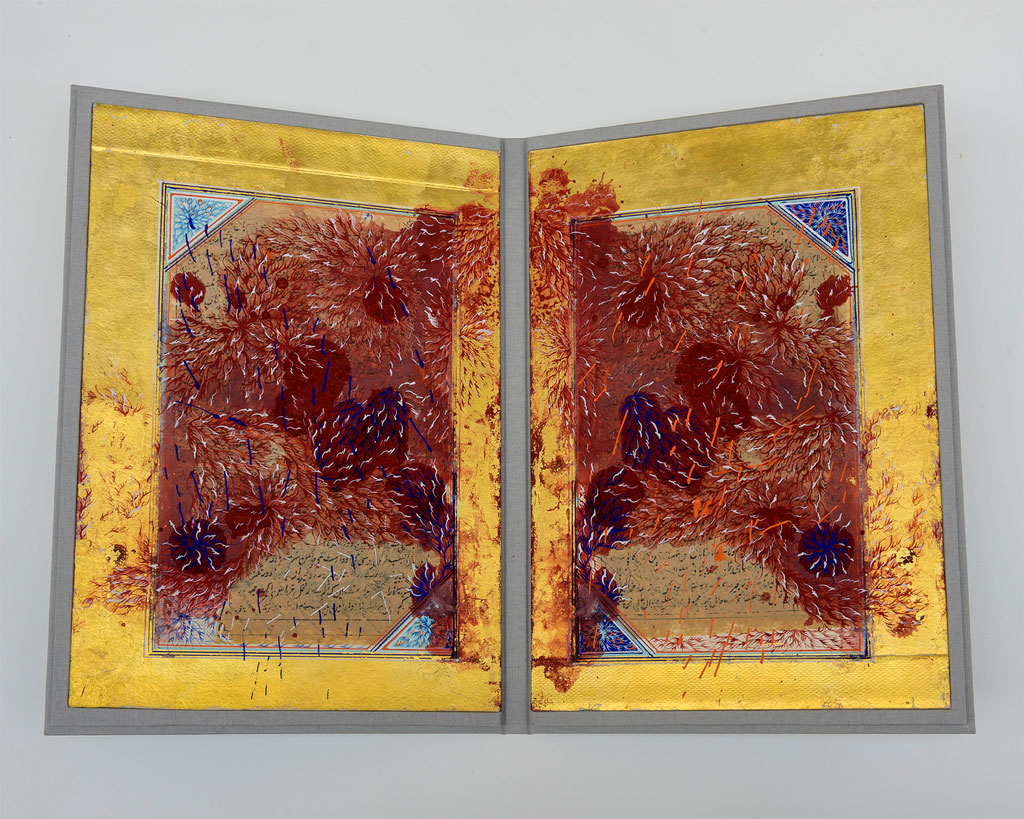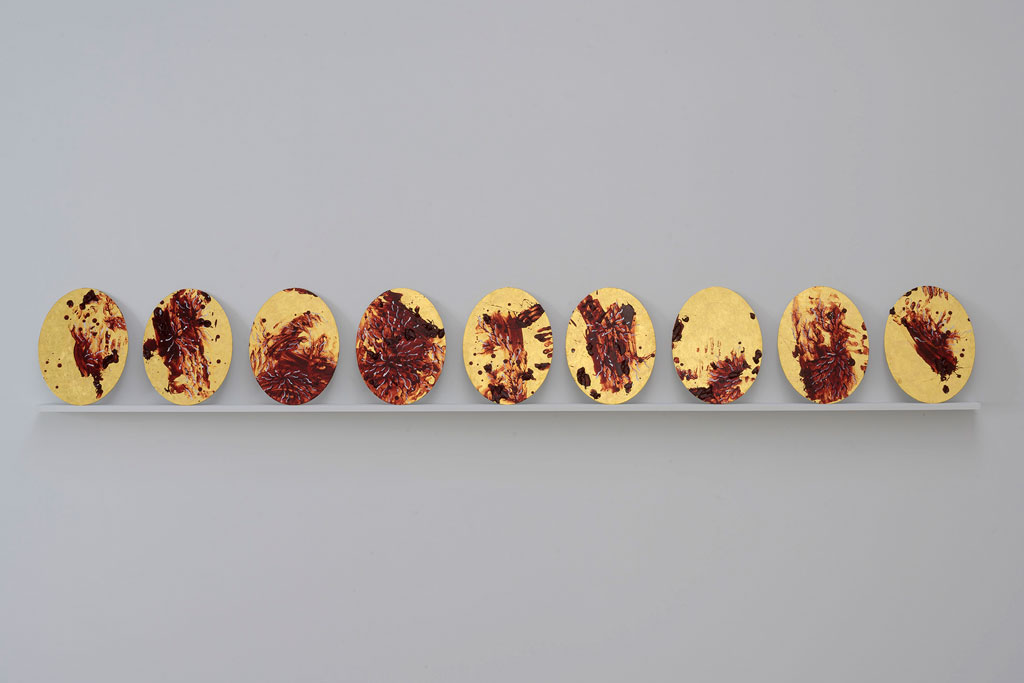ART-PRESENTATION: Imran Qureshi-The Seeming Endless Path of Memory
 Imran Qureshi’s work constitutes a unique synthesis of the genre’s motifs and techniques with current issues and the formal language of contemporary abstract painting. Qureshi incorporates personal observations on everyday life in present-day Pakistan into his work while acknowledging that violence can be met with not only in his native country, but in many cultures and societies worldwide.
Imran Qureshi’s work constitutes a unique synthesis of the genre’s motifs and techniques with current issues and the formal language of contemporary abstract painting. Qureshi incorporates personal observations on everyday life in present-day Pakistan into his work while acknowledging that violence can be met with not only in his native country, but in many cultures and societies worldwide.
By Dimitris Lempesis
Photo: Galerie Thaddaeus Ropac Archive
Imran Qureshi became known to a broader public with a large-scale site-specific work on the Roof Garden at The Metropolitan Museum of Art in 2013. Using the nearly 750-square-meter open-air space as his canvas, Qureshi has worked areas of his spilled and splattered red acrylic paint into patterns of lush ornamental leaves that evoke the luxuriant walled gardens that are ubiquitous in miniatures of the Mughal court. Resonating throughout the exhibition “The Seeming Endless Path of Memory” is Imran Qureshi’s exploration of the infinite through the motif of the fold: the screen-like structure of his panel painting, with gradations from red to gold leaf and measuring 10 metres in length, the undulating shape of an endlessly extending miniature painting, and the folded canvases of the relief paintings. The large-scale exhibition also features a series of distinctive miniature paintings exploring self-portraiture and the artist’s idea of landscape. Qureshi’s varied abstract paintings created over the last two years reflect at times the traces of his own body and personify the constant dialogue between monumentality and the minute. In a number of works, dark layers of red or blue gradually transform into a light gold, the subtle and rhythmic changes of tonality appearing as one continuous course of action. Elsewhere, Qureshi draws upon the tradition of action painting, welcoming gravity, velocity, and improvisation into the artistic process: through direct physical engagement with the canvas, the act of painting becomes a performative part of the painting’s expression. Throughout Qureshi’s practice, the artist reflects on the symbolic meaning of numbers. For example, the twelve panels of “The Endless Path” (2018), with delicately placed gold leaf and dark splashes of red paint, refer to the number twelve, which has more divisors than any other scaled relative. The power of the number itself and its scientific value has seen its integration into both culture and religion. The artist’s choice of specific numbers suggests a reflection on the relationship between the rational and the spiritual, the human and the divine, within the context of his contemporary practice. Furthermore, the exhibition features a prominent series of miniature paintings depicting the Story of Two through finely painted trees that show a subtle unity and separation, akin to arteries of life juxtaposed against the self-portraits taking position of sole observer. The artist, in contemporary dress, is situated within an abstract background, surrounded by the detailed ornamental motifs of the miniaturist style – traditionally commissioned by the Mughal Emperors (1526-1857). The “Truth Path” spans the nave of the gallery and consists of 40 pages joined together. It is laid out in such a way to allow the viewer to walk along the increasing and decreasing folds. Depicting an imaginary landscape of trees, leaves, stones and dragonflies alongside missiles, it is rendered in soft shades with incursions of fine red vines reflecting an idyllic altered by a threatening undercurrent. Imran Qureshi’s more recent series of relief paintings “Fabric of Heaven” combines red acrylic paint with a gold-leaf surface, developed singularly along the multiple creases of its folded canvas to create a mesmerising visual experience. Imran Qureshi said, “The dialogue between life and death is an important element in my work. Leaves and nature, for example, represent the idea of life. And the particular color of red that I have been using in recent years can look so real, like blood. But somehow, people still have hope. The flowers that seem to emerge from the red paint in my work represent the hope that—despite everything—the people sustain somehow, their hope for a better future”. The artist works are modulated through a socio-political reflection on the precariousness and inherent violence of the contemporary world. Ultimately, whether presented in large-scale or in miniature formats, his works tend towards an aesthetic, religious and spiritual inquiry on the proximity of creation and destruction and recreation in all aspects of life – engaging the viewer on both a visceral and spiritual level.
Info: Galerie Thaddaeus Ropac, 69 Avenue du Général Leclerc, Pantin, Duration: 19/5-27/7/19, Days & Hours: Tue-Sat 10:00-19:00, https://ropac.net






